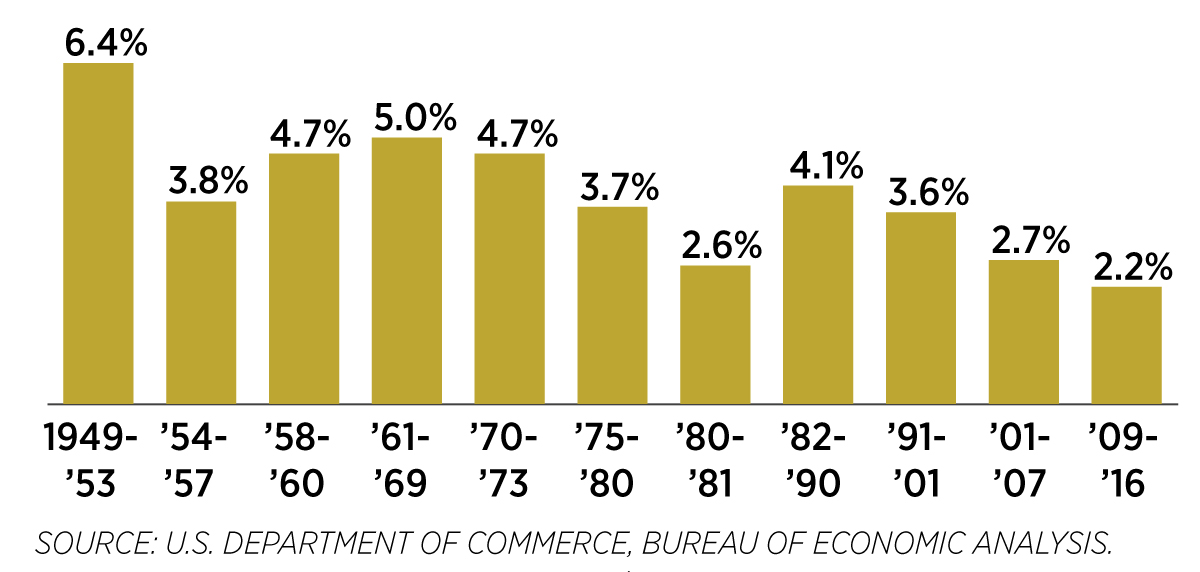 No one should be happy about the chart above, which illustrates declining American economic growth rates. Forbes publisher Rich Karlgaard isn’t, and he’s searching for answers that would explain the economic slowdown.
No one should be happy about the chart above, which illustrates declining American economic growth rates. Forbes publisher Rich Karlgaard isn’t, and he’s searching for answers that would explain the economic slowdown.
Like a bouncing ball, the bounce has been lower with each recovery. Why? This being an election year, we’d love to blame the party we hate. But growth under Truman (D) was higher than it was under Eisenhower (R), Kennedy (D), Johnson (D) and Nixon (R). The Carter (D), Reagan (R) and Bush I (R) years were a bit slower but better than Clinton’s (D), which were better than Bush II’s (R), which beat Obama’s (D).
If the politics can’t explain the entropy, can taxes? That’s not so clear. Taxes were nominally high but functionally low under Truman and Eisenhower–i.e., very few people paid the nosebleed rates. Taxes were nominally low but functionally high under George W. Bush. See why this is muddy?
Karlgaard does find three issues that help explain growth patterns for the past 65 years.
–The rest of the world has caught up to the U.S. Amid the wreckage of World War II the U.S. was the last major economy left unscathed. West Germany began a miraculous recovery under its first postwar chancellor, Konrad Adenauer (1949-63), as did Japan. And by the 1970s both countries had blossomed into economic rivals to the U.S. …
… –Abandoning the gold standard in 1971. The result has been a U.S. dollar that is often too cheap or too dear–i.e., it’s neither stable nor predictable. This has given the Federal Reserve more power than it should have. …
… –The explosion in federal regulation. As documented by Patrick McLaughlin and Richard Williams of the Mercatus Center at George Mason University–I’ll use round numbers for simplicity–the amount of federal regulation has grown 1,700% since 1950. The economy has grown 700% over the same period while the population has slightly more than doubled. Thus there is 8.5 times as much regulation for every person and 2.2 times as much regulation for every dollar produced today than there was in 1950. Much of this sand in the gears of commerce is “restrictive,” claim McLaughlin and Williams. A restrictive regulation is exactly what it sounds like–the Nurse Ratched of regulations. It contains such words as “no,” “shall not” and “must.” (An aside: When my kids were little, they called parents who used restrictive words “fun suckers,” because they sucked the fun out of everything. Restrictive regulations should be called “innovation suckers.”)


